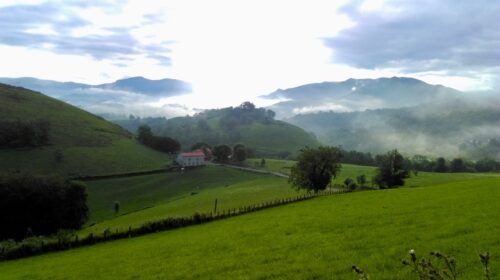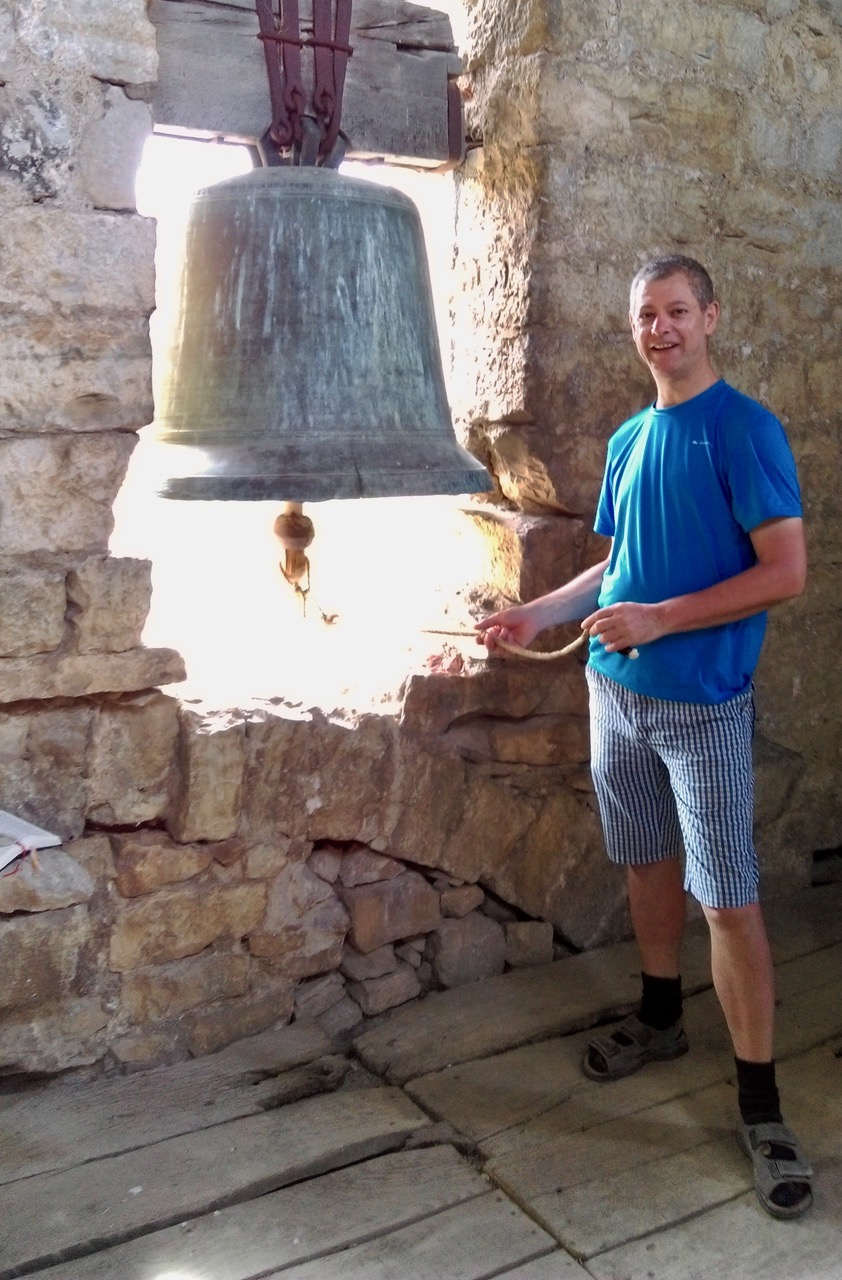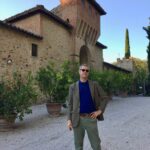
By Francesco Bianchini
One hot August a few years ago, I decided with a friend to realize a dream we’d both kept hidden in a drawer. We departed – she from Umbria, I from the Dordogne – and met in Bordeaux. By train from there we reached the small village of Saint-Jean-Pied-de-Port in the Pyrenees-Atlantiques, the foot of the hill of Roncesvalles. After spending an uncomfortable night on bunk beds, wrapped in disposable sheets, and in the company of a half dozen other hostel inmates, we set out at dawn for Santiago de Compostela, 500 miles to the west. A difference in altitude of 4265 feet, and sixteen miles of walking awaited us that first day. But such considerations are not the mentality of the pilgrims of Santiago, for whom only the present, and one’s daily effort, has worth. There’s always more road ahead, and higher to climb – e ultreïa e suseïa, they cried encouraging one another on the trek. If the Camino summons images of a march along highways, blasted by speeding trucks, breathing the toxic air of traffic, risking to be mowed down at every turn, you are far off the mark. With the exception of a few urban crossings, the well-signposted trail meanders along rural paths: now bordering a field, now tracing the shore of a stream; crossing ancient arched bridges; climbing the crest of parched hills or entering a beech forest; continuously revealing magnificent views of isolated chapels and ruins, and giving the impression of being parts of the original and timeless track followed over the centuries by countless pilgrims.
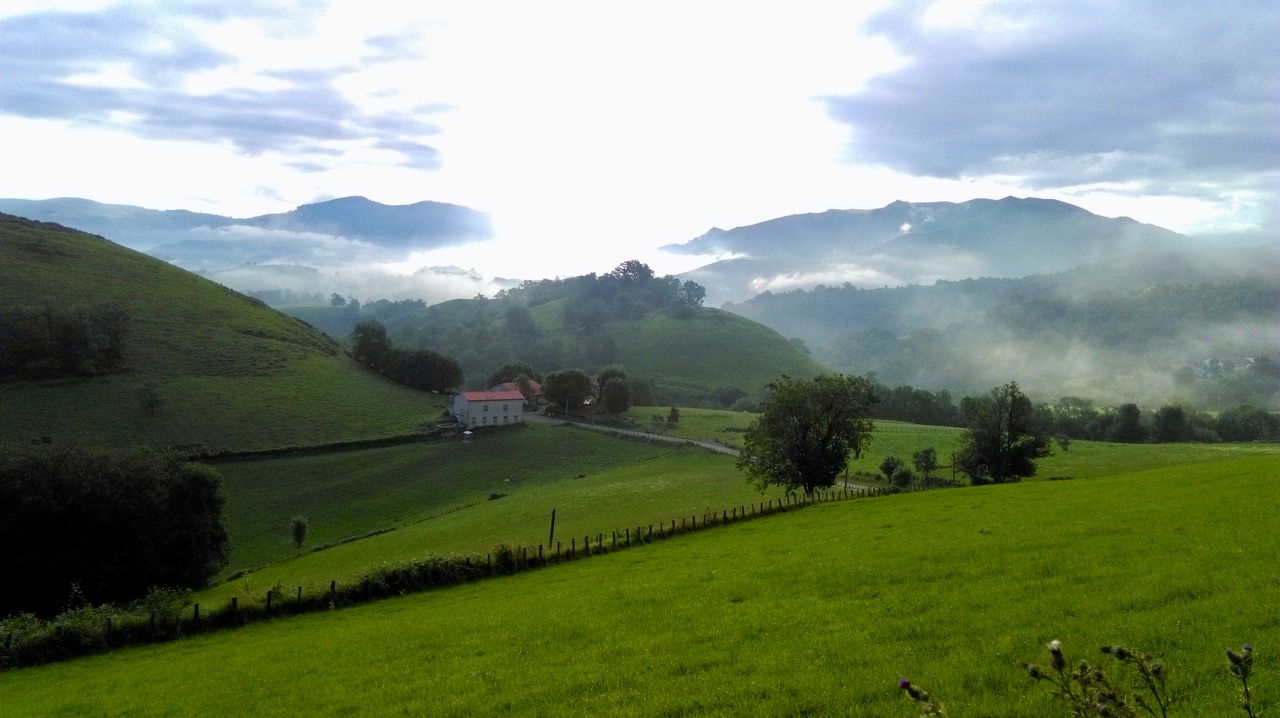
Ascent from Saint-Jean-Pied-de-Port
We traced the route taken by Napoleon’s soldiers in his Spanish campaign, cutting through numerous steeply sloped shortcuts; among ferns and patches of foxglove in the pungent morning air, our backs loaded with our meagre possessions. We had breakfasted sparsely at the hostel on watered-down coffee and a buttered baguette, but when we reached a shelter overlooking a wide valley glistening in a veil of blue mist, knowing we wouldn’t find another resting place before we reached Spain, we stopped for more coffee and a croissant. The higher we climbed, the more we felt the need to conserve energy, regulate our breathing, and not to waste breath in chatter. Our muscles were stressed and extraordinarily alive and sensitive; the opposite of what occurs when seeking maximum well-being – comfort, yes, but by an anesthetized relationship with one’s own body. And this helped clear my mind, to concentrate on these unrepeatable moments. After six hours of walking, around one o’clock in the afternoon, we reached the top of the mountain pass. A few hundred meters from Roland’s fountain, which marks the border, we discovered a van parked on a grassy clearing, offering with stupendous opportunism cheeses from a nearby farm, bottles of water, and fresh fruit. We ate and drank, and closed our eyes on the grass, surrounded by the crown of mountains.
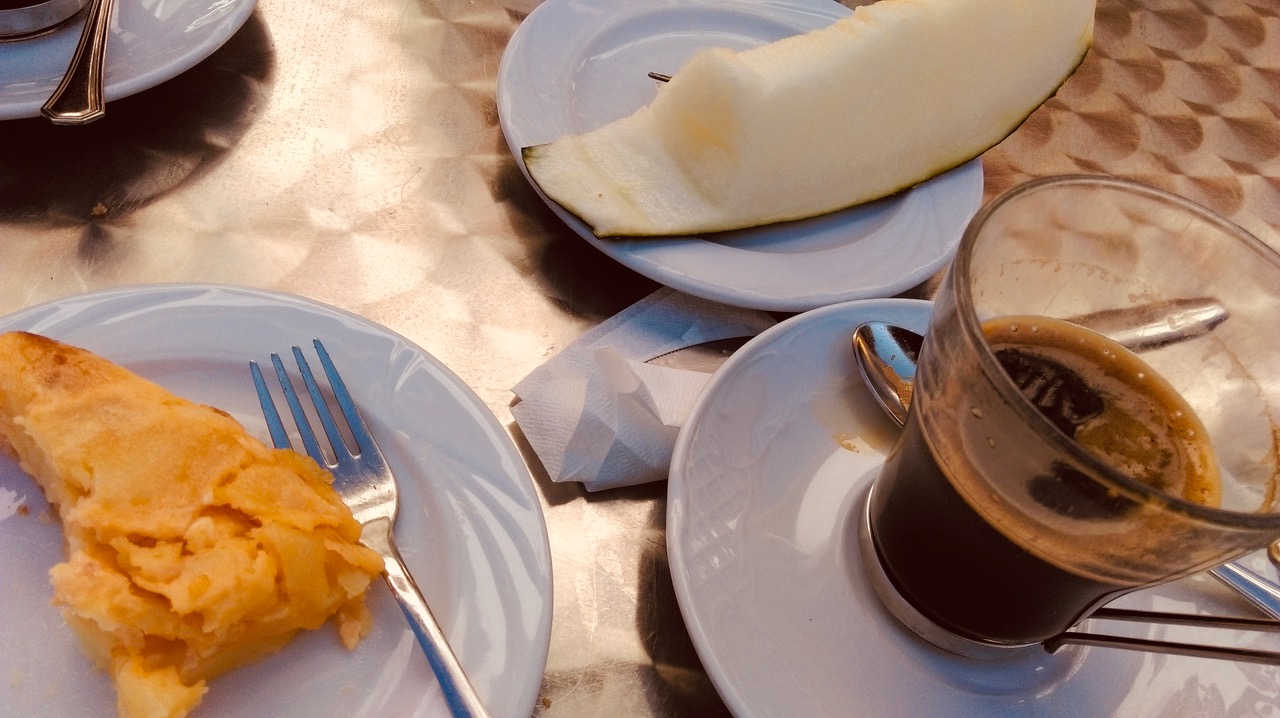
Desayuno en España
After a brisk descent through dense evergreen forests, we arrived at Roncesvalles almost at dusk, hot, tired, and aching. We’d lost time on the way and, arriving late, were badly housed in a shuttered wing of a collegiate school where the bunk bed mattresses certainly hadn’t been aired. Leaving Roncesvalles – somber in Christian memory, where Charlemagne was defeated by the Moors – the landscape became broader and more pastoral. By early morning we were already on our way through the verdant valleys of Navarre. But if there is anything I have wanted to recall from this adventure, it is the tidy village of white bell-shaped houses – typical of the Basque region – where a burbling watercourse ran alongside the main street. Here our footsteps resounded in the late morning silence until we paused for breakfast. I’ve already mentioned how, of all meals of the day, I especially love breakfast – ideally when you may sit at a table with all the time in the world, slowly savoring the day ahead. We were in no hurry as we’d booked a hotel room for the night – with real sheets and pillow cases, where we’d not have to compete for showers, or a sink for laundering our dirty clothes. We found a bar, ordered coffee and our meal, and sat under an umbrella on the adjacent square. Other trekkers, backpacks abandoned all around, sat nearby; reading, dozing, or stretching out in the gentle sunlight of the 2300-foot altitude. Aromatic and vigorous like the forests of evergreens we’d passed through, big cups of coffee arrived. They were accompanied by slices of tortilla, thick and creamy – the Spanish kind, with potatoes smoothly blended with the eggs – and for each of us a half-moon of luscious white melon, what we sometimes call winter melon, sweet as honey and vaguely scented of pears.
|
A bell for Francesco |
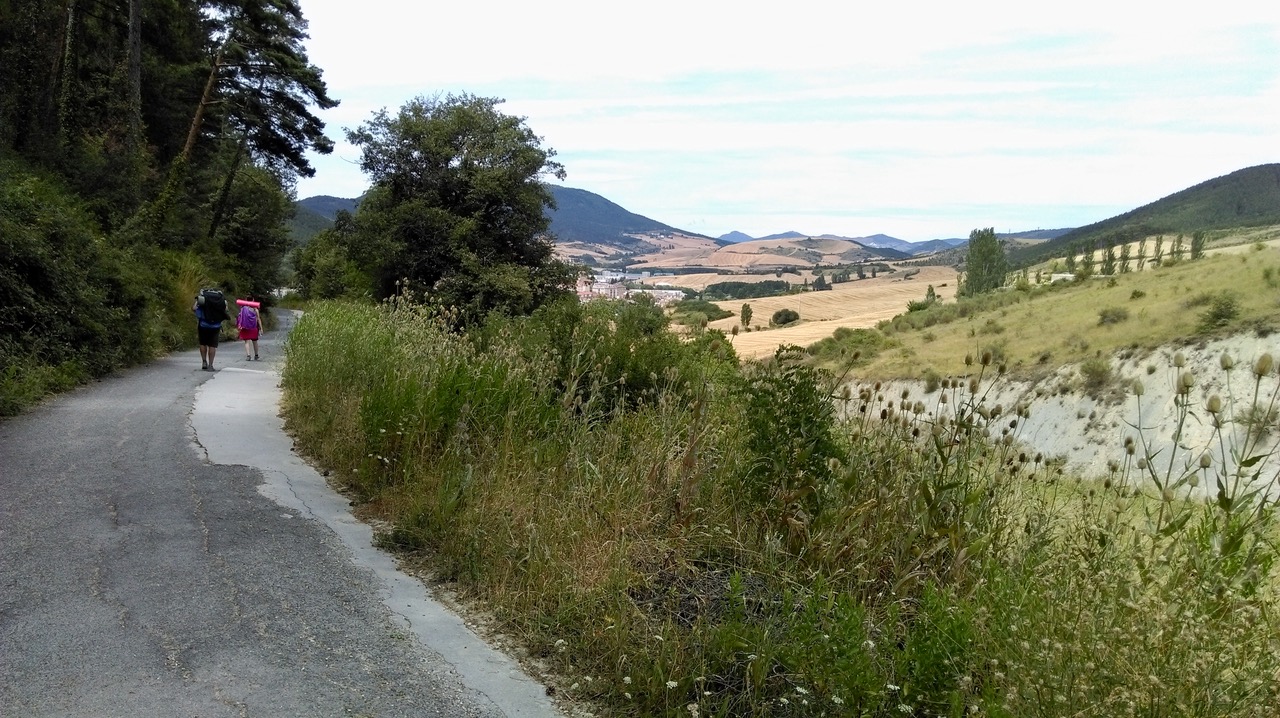
On the plains of Navarra |
We entered Pamplona two days later, and I had two large and painful blisters on my feet – my fault for having insisted on wearing sandals instead of proper hiking shoes. The steep descent of the Pyrenees towards Roncesvalles had been fatal. My friend continued her journey and arrived in Santiago three weeks later – albeit with her own aches and pains. But for me, alas, the end of the road was Pamplona, city of bulls, where a carnivore par excellence can delight in its huge number of butcher shops and steak houses – and where, also, the largest number of podiatrists may practice per capita.
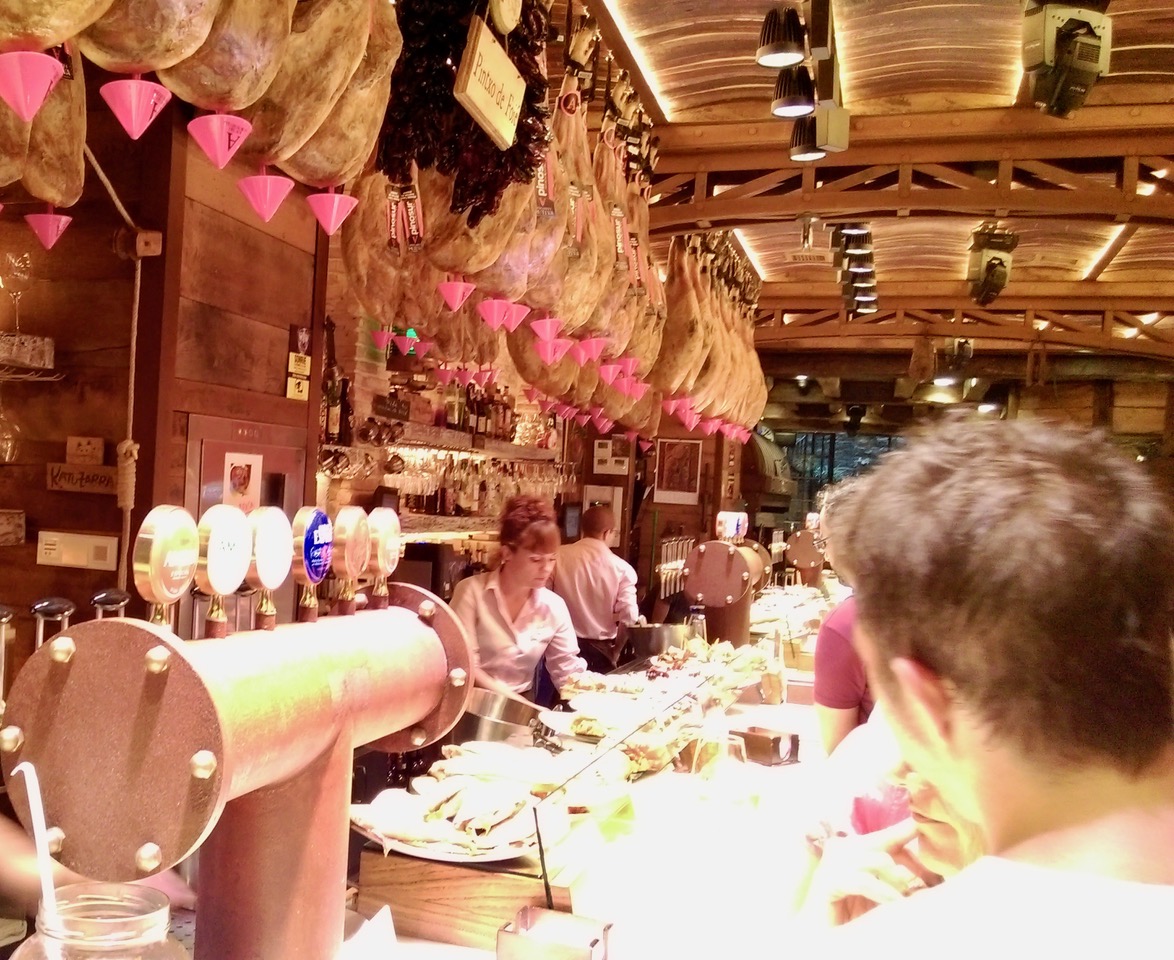
Pamplona the carnivorous…



